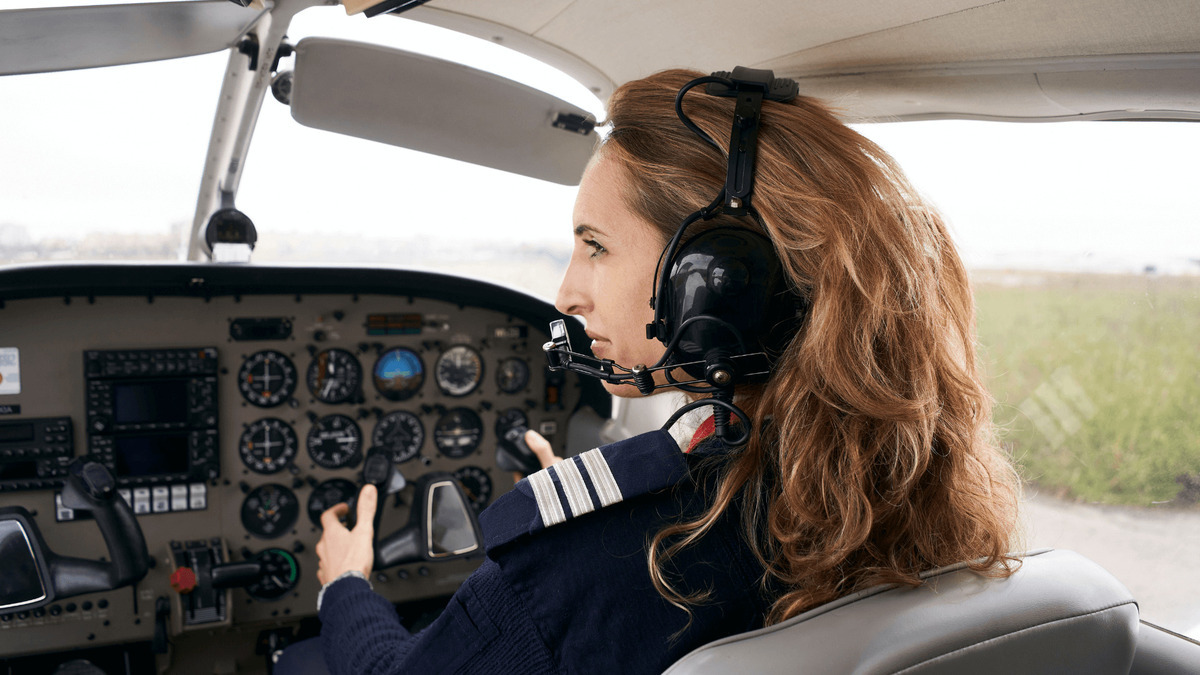
Ever wondered what it takes to become a commercial pilot? Earning a Commercial Pilot License (CPL) is a thrilling journey filled with rigorous training, dedication, and a passion for flying. This license allows pilots to be paid for their aviation skills, opening doors to careers with airlines, cargo companies, and private charters. From mastering complex maneuvers to understanding aviation regulations, the path to a CPL is both challenging and rewarding. Whether you're dreaming of soaring through the skies or just curious about the process, these 25 facts will give you a clear picture of what it takes to earn a CPL and the exciting opportunities that come with it. Buckle up and get ready for takeoff!
What is a Commercial Pilot License (CPL)?
A Commercial Pilot License (CPL) allows pilots to be compensated for their flying services. It’s a significant step up from a private pilot license, requiring more training, experience, and knowledge.
- CPL Requirements: To obtain a CPL, you must be at least 18 years old and hold a private pilot license (PPL).
- Flight Hours: You need a minimum of 250 flight hours, including specific types of flying like cross-country and night flying.
- Medical Certificate: A second-class medical certificate is required, ensuring you meet health standards.
- Written Exam: Passing a written exam covering topics like navigation, meteorology, and flight planning is mandatory.
- Flight Test: A practical flight test with an examiner is the final hurdle to earning your CPL.
Training and Education
Training for a CPL involves rigorous education and hands-on experience. Here’s what you need to know about the training process.
- Ground School: Ground school covers theoretical knowledge, including aviation regulations, aircraft systems, and aerodynamics.
- Flight School: Practical training at a flight school helps you gain the necessary flight hours and experience.
- Simulators: Flight simulators are used to practice emergency procedures and complex maneuvers safely.
- Instructors: Certified flight instructors guide you through the learning process, providing valuable insights and feedback.
- Advanced Maneuvers: Training includes advanced maneuvers like steep turns, stalls, and emergency landings.
Career Opportunities
A CPL opens the door to various career opportunities in the aviation industry. Here are some potential paths.
- Airline Pilot: Many CPL holders aspire to become airline pilots, flying commercial aircraft for major airlines.
- Charter Pilot: Charter pilots fly private planes for individuals or companies, offering more flexibility than airline schedules.
- Cargo Pilot: Cargo pilots transport goods rather than passengers, often flying at night or on irregular schedules.
- Flight Instructor: With additional certification, CPL holders can become flight instructors, teaching new pilots.
- Agricultural Pilot: Agricultural pilots, or crop dusters, fly low over fields to apply pesticides or fertilizers.
Financial Considerations
Becoming a commercial pilot involves significant financial investment. Here’s what to expect.
- Training Costs: Flight training can cost anywhere from $50,000 to $100,000, depending on the flight school and location.
- Scholarships: Various scholarships are available to help offset the cost of flight training.
- Loans: Many aspiring pilots take out loans to finance their education and training.
- Salaries: Starting salaries for commercial pilots can be modest, but experienced pilots can earn six-figure incomes.
- Return on Investment: Despite the high initial cost, a career as a commercial pilot can be financially rewarding in the long run.
Licensing and Regulations
Understanding the licensing process and regulations is crucial for aspiring commercial pilots.
- FAA Regulations: In the United States, the Federal Aviation Administration (FAA) sets the standards for CPL requirements.
- International Standards: Other countries have their own aviation authorities, like EASA in Europe, which have similar but distinct requirements.
- License Renewal: CPLs must be renewed periodically, requiring ongoing medical exams and flight reviews.
- Type Ratings: Additional type ratings are needed to fly specific aircraft, involving further training and testing.
- Continuous Learning: Pilots must stay current with new regulations, technologies, and procedures throughout their careers.
Final Thoughts on Commercial Pilot Licenses
Getting a Commercial Pilot License (CPL) isn't just about flying planes. It’s a journey filled with dedication, training, and a deep love for aviation. From understanding aviation regulations to mastering complex flight maneuvers, every step prepares you for a rewarding career.
The cost and time commitment might seem daunting, but the payoff is a career that literally takes you places. Whether you dream of flying for major airlines or piloting private jets, a CPL opens doors to numerous opportunities.
Remember, the aviation industry is always evolving, so continuous learning and staying updated with the latest advancements is crucial. If you’re passionate about flying and ready to invest in your future, a CPL could be your ticket to the skies. Happy flying!
Was this page helpful?
Our commitment to delivering trustworthy and engaging content is at the heart of what we do. Each fact on our site is contributed by real users like you, bringing a wealth of diverse insights and information. To ensure the highest standards of accuracy and reliability, our dedicated editors meticulously review each submission. This process guarantees that the facts we share are not only fascinating but also credible. Trust in our commitment to quality and authenticity as you explore and learn with us.


